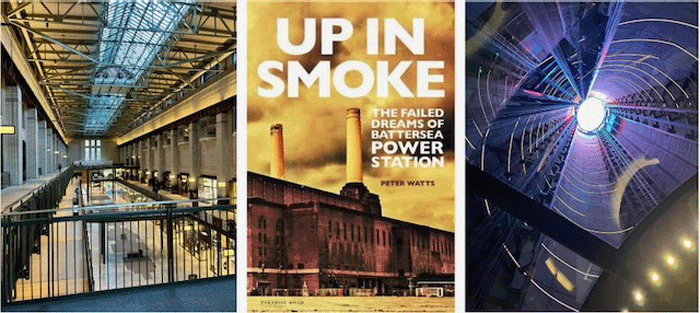Bletchley Park
February 5, 2024
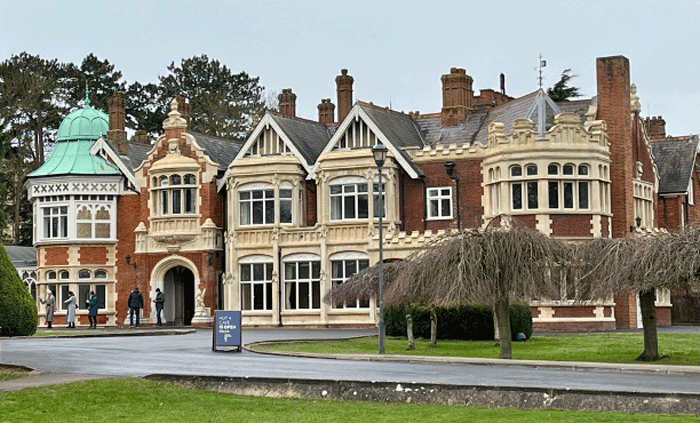
With all of the recent attention devoted to AI, I decided to visit a notable landmark on this London visit: Bletchley Park, where Alan Turing and his colleagues were able to break the German ‘Enigma’ codes in WWII. The estate is located about an hour’s train-ride north of London, and has two major sites: 1) the complex where, by the end of the war, nearly 9,000 people were working on cryptography and intelligence gathering; and 2) a separate National Museum of Computing, which claims to have “the world’s largest collection of working historic computers.”
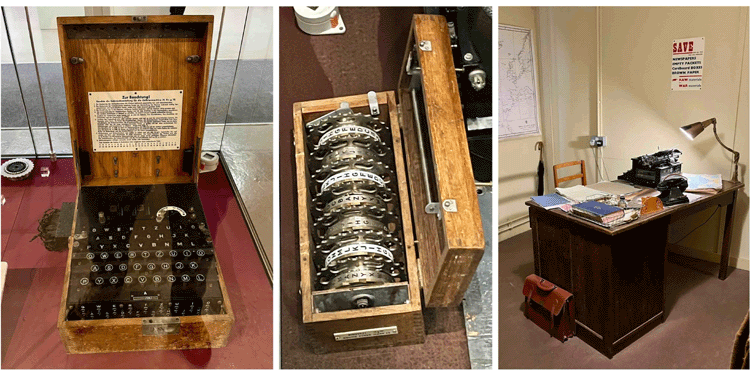
Both were quite fascinating. Anyone familiar with Alan Turing’s tragic story – a mathematical and technological genius driven to suicide because of his homosexual tendencies, despite having played a key role in enabling the Allies’ victory in WWII – will marvel at his actual accomplishments. The Enigma machines had six rotors, and scrambled messages accordingly. Turing laid out an approach in a “bombe” computer that could be used to determine the rotor settings – and thus decipher messages. Later in the war, strategic messages from the German headquarters were sent with an additional six rotors – and the British developed an even more powerful dedicated-purpose computer... the Colossus!
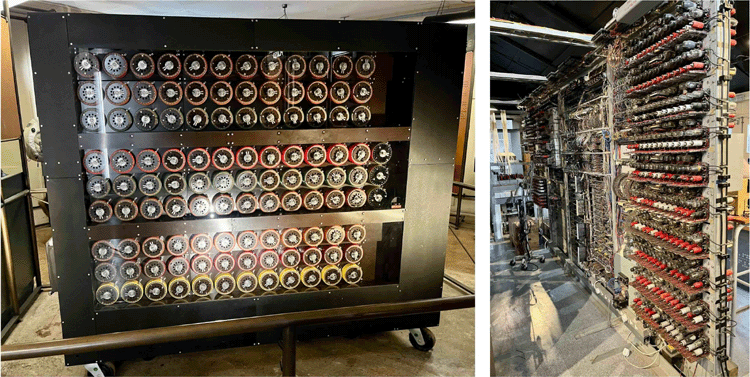
What is especially impressive about the Bletchley Park exhibits is that they have re-developed working versions of these machines…. and are thus able to show the exact tasks that people there were performing. It’s a fascinating example of human ingenuity – and dedication to a crucial cause.
Royal Institution
February 5, 2024
Last year’s visit to the U.K. focused on rock & roll – and I decided to get a bit more serious on this year’s return, on my way home from China. I arranged a personal scientific history tour with Laurence Scales, a knowledgeable guide who took me through the Royal Institution of Great Britain in Mayfair, and well as nearby historical sites in Soho.
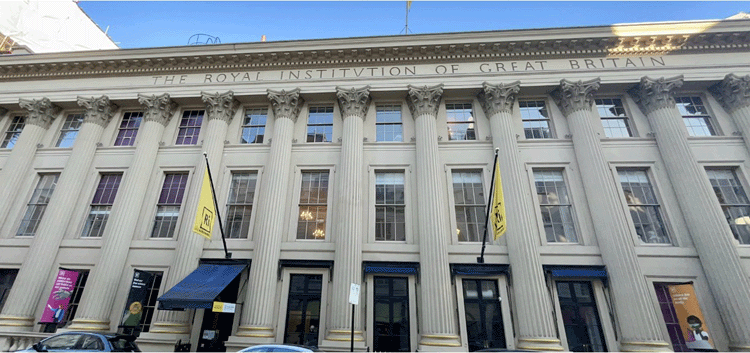
The Royal Institution (RI) was founded in 1799, with a mission a bit more practical than the better-known Royal Society – although its personnel were equally distinguished. Early leaders included the chemist Humphrey Davy (inventor of the Davy lamp); the electrochemist Michael Faraday; and – especially relevant today – the Irish physicist John Tyndall, often called the father of climate science, because of his determination of the absorptive capacities of individual gases in the atmosphere. [Tyndall met an unfortunate end when he was accidently (?) poisoned by his wife.]
By lucky happenstance, we were able to get into the laboratory of the Faraday Museum – still locked with the original key that Faraday used. Laurence also told me about another distinguished RI scientist that I didn’t originally recognize: Thomas Young. I did vaguely recall Young’s Modulus from my days as an engineering lab assistant in a materials science course back in the early 1970s…. but his description of this polymath led me to a fascinating book by Andrew Robinson, entitled The Last Man Who Knew Everything:Thomas Young.
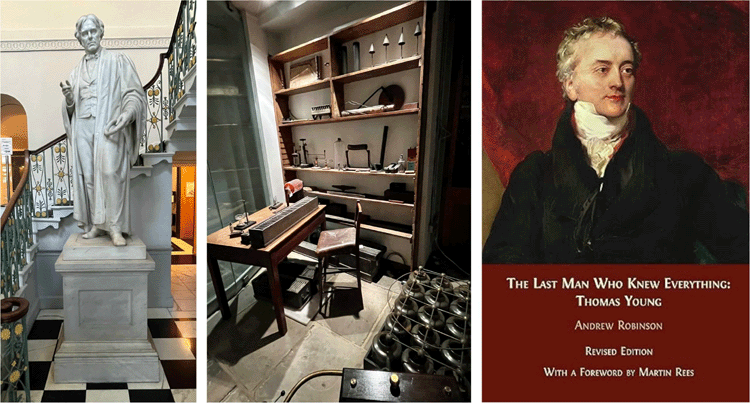
In addition to material science, Young had ground-breaking scientific ideas in optics, medical physiology, language theory, and – perhaps most surprisingly – Egyptian hieroglyphics. He was, however, a rather poor lecturer at the Royal Institution: since he knew everything, he apparently assumed that others did as well.
Battersea Power Station
February 5, 2024
When I was a young boy, I often traveled to London by train…. and knew I was getting close to Victoria Station when the train passed the iconic Battersea Power Station. Peter Watts begins his book about the power plant, Up in Smoke, describing exactly that same experience -- although the view is no longer available. Instead, it has been blocked by upscale condominiums, part of the re-development that occurred years after the power plant was closed.
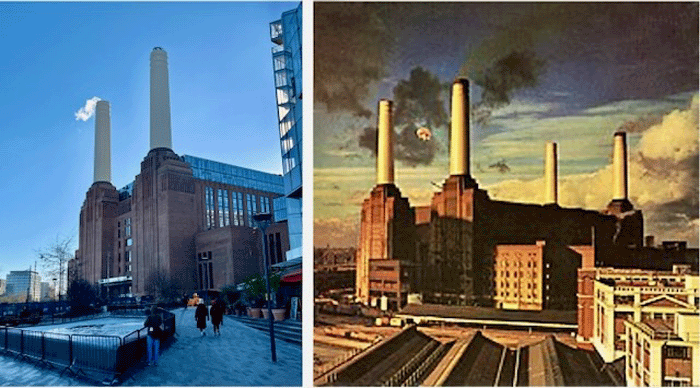
Cover design: Hipgnosis
Watts tells the story of that re-development, but truthfully I was much more interested in another part of its history. I discuss the power plant in my energy technology course, because it was the site of the very first flue gas desulfurization (FGD) system, utilizing Thames River water to remove acidic sulfur dioxide from the exhaust gas of its coal-fired units. This was not a comprehensive environmental solution, because the resulting liquid effluent was dumped back into the river – but it was a start.
Watts’ book was very informative, however, because I did not realize how important the FGD unit was in getting approval for building such a major coal-burning facility right in the middle of the city. That was close to the electrical load demand, but even then (early 1930s) citizens were concerned about the pollution. Similarly, as Watts notes, it had an effect on the iconic design:
For the [FGD] process to function, chimneys needed to be sited at either end of the flues, which ran the entire length of the building: this would eventually give Battersea Power Station its distinctive appearance.
Today the power plant houses an upscale shopping center in its turbine halls, and one can take an elevator up to the top of one of those iconic stacks on Lift 109. The power plant has played a key cultural role in numerous movies, and received special attention in 1977 when it appeared on the cover of Pink Floyd’s Animals album. That featured a pink pig flying between its stacks – although the pig unfortunately became untethered, disrupting air traffic and ending up in Kent.
